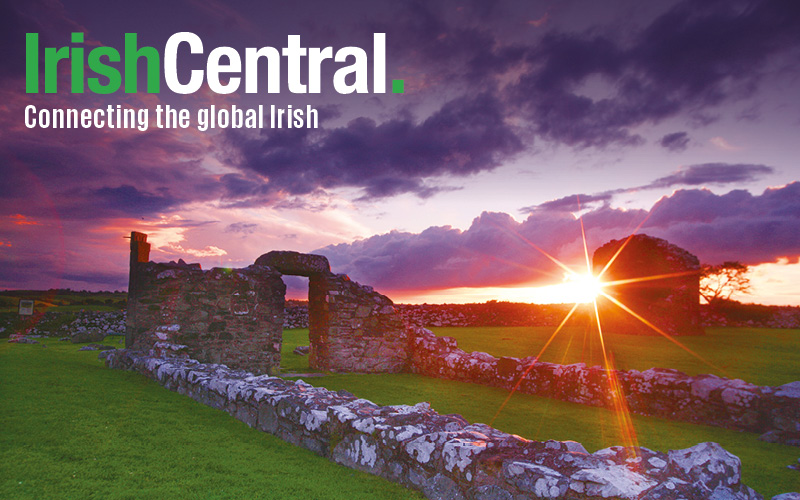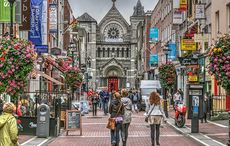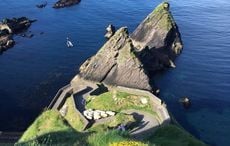"In the lives of cities, boldness and vision rarely follow catastrophe," wrote architectural critic Paul Goldberger. The city of Belfast in Northern Ireland may be the exception that proves the rule. After a generation of Troubles, the citizens of the great port city have grown accustomed to peace and economic growth. Innovation is surging, as is its youthful population: the U.K.'s fastest growing region and one-third of its 1.7 million people are under 25. This is a citizenry poised for economic success. A century ago Belfast was a hub of the Industrial Revolution, thriving on heavy engineering and shipbuilding, and the Port of Belfast was one of the world's greatest docklands. When work began on the RMS Titanic in 1909, Belfast was at its peak, but by 2000 shipbuilding was down to a trickle and the Belfast docks lay almost idle. Now, after a decade of peace and in response to the demise of the great shipbuilding days of yore, a new vision is taking hold on the docklands within walking distance of Belfast's city center. These opportunities include the new multi-million-dollar Northern Ireland Science Park and the planned development of the Titanic Quarter, a 185-acre project that will become Europe's largest urban waterfront development - more than twice the size of London's Canary Wharf. "This will become a major symbol of the economic regeneration of Belfast and Northern Ireland," said Mike Smith, chief executive of the project. "Titanic Quarter will bring new life to a part of the city that is rich in both history and potential." The planned £1.5 billion ($ 2.9 billion) development, which is expected to create at least 20,000 jobs over the next 15 years, will transform the area into a new maritime quarter with over 2,000 new homes as well as business, leisure, tourism and education facilities. The project is being developed by the Port of Belfast and Titanic Quarter Ltd,, a division of Harcourt Developments. Patrick J. Doherty, who heads up Harcourt, has spearheaded the development of some of the largest properties in Ireland, the U.K. and the Caribbean. Support may also come from the Titanic Signature Project, which recently made the short list for the U.K.'s Big Lottery Fund's Living Landmarks Program; if selected, the Titanic Signature Project, developed by Titanic Alliance, could receive allocations of between £10-25 million ($19 -$47.5 million) . Partners in the Alliance include Belfast Harbour Commissioners; the Department of Enterprise, Trade and Investment; the Northern Ireland Tourist Board, the Belfast City Council and the East Belfast Partnership. "Titanic Quarter is exciting not just for Belfast but for all of Northern Ireland," says Frank Cushnahan, Chairman of the Belfast Harbour Commissioners. "We see it as the catalyst for Belfast's becoming the economic and leisure gateway to Northern Ireland. The size, scale and location make it unique on these islands and we are determined to realize its massive potential." Titanic Quarter's lead architect, American Eric Kuhne describes the rationale for the design. "Other cities' waterfronts have nowhere near the legacy of this site. During the latter stages of the Industrial Revolution, Belfast attracted some of the world's best engineers, designers and artisans. The city was the center of innovative naval architecture and single-handedly invented luxury ocean travel." The site will be a major force in creating jobs in information technology and services. The aim is to build a community centered on social interaction and shared values. The pattern of parks, streets and gardens and the localized retail, healthcare, and educational facilities will be a new focal point for Belfast. "We have already seen the success of the Northern Ireland Science Park at the docklands in delivering major investors such as Microsoft and Citigroup," says Kuhne. "That is only the start of the growth that will be achieved here." The Port of Belfast is both a major center of industry and commerce and Northern Ireland's principal maritime gateway to the U.K., mainland Europe and the Republic of Ireland. Approximately 60 percent of Northern Ireland's seaborne trade, and 20 percent of Ireland's as a whole, are handled at the port, which receives over 6,000 vessels each year. As many as 1.2 million passengers and half a million freight units pass through the port annually. Belfast is also Ireland's busiest ferry port. Major imports for the North are handled - as much as 95 percent of Northern Ireland's petroleum and oil products. An overarching presence on Belfast's waterfront is the shipping company of Harland and Wolff, whose twin cranes have dominated the city's skyline for many years. Formed in 1861 by Edward James Harland and Gustav Wilhelm Wolff, the shipyard has built many types of ships continuously since then, the most famous being the RMS Titanic and her sister ships, RMS Olympic and HMHS Britannic. The trio of super liners - of the more than 70 ships produced for the White Star Line - was designed to provide a three-ship weekly express service and dominate trans-Atlantic travel. During her maiden voyage (from Southampton, England, to New York) Titanic struck an iceberg at 11:40 p.m. on Sunday evening, April 14, 1912, and sank two hours and forty minutes later, after breaking into two pieces. Despite the devastating consequences of that disaster, the pride, will and spirit of Belfast prevailed - as did Harland and Wolff. During World War I the company built monitors and cruisers, including the 15-inch gun-armed "large light cruiser" HMS Glorious. During World War II the shipyard was also busy, building six aircraft carriers, two cruisers and 131 other naval ships, and repairing over 22,000 vessels. It also manufactured tanks and artillery components. The yard was heavily bombed by the Luftwaffe in April and May 1941, seriously damaging the shipbuilding facilities and destroying the aircraft factory. The growth of jet travel in the late 1950s and the consequent decline in demand for passenger ships dealt a blow to the British shipbuilding industry, which was already facing stiff competition from Japan. In 1989, through a management/employee buyout, a new company called Harland and Wolff Holdings was formed. By this time, the number of people employed by the company had fallen to around 3,000 - less than a tenth of its workforce during World War II. For most of its history, Harland and Wolff's workers were almost exclusively Protestant. Occasionally some Catholic workers reported discrimination and violent and threatening behavior. However, the past decade of peace in Northern Ireland has produced a new era of social, business and economic cooperation. Now, with peace and the opening of initiatives such as the Northern Ireland Science Park, the city is one of the leading locations for U.S. companies moving into Europe - companies that include Seagate, Liberty Mutual, Citigroup and Allstate. The Northern Ireland Science Park, on 24 acres of docklands, is quickly becoming a new academic beachhead alongside the pumping stations and dry docks of earlier days. By 2009 the park will comprise four facilities with over 100,000 square feet of high-tech space. Citigroup has based one of its global technology centers in the Park; Microsoft has opened an office there; and biotech and energy technology ventures have also located there. Within the Park the Institute of Electronics, Communications and Information Technology (ECIT) is a new £40 million ($76 million) research center that is an off-campus site for Queens University, Belfast. This year the Belfast Institute of Further & Higher Education announced its plan to build a new single campus for its 7,000 students in the Titanic Quarter, to replace the College Square East and Brunswick Street campus buildings. Construction will begin in early 2007 and is expected to complete in 2009. "The relocation of their city center campus within the Titanic Quarter will give Belfast a state-of-the-art, purpose-oriented campus fit for 21st-century education and learning," says Smith. "The decision sends the right message to foreign investors and local companies that Belfast has a world-class research center attracting higher education, colleges and specialists in the key areas of an advanced knowledge economy." Titanic Quarter is Northern Ireland's energetic response to the great urban-design challenge of the 21st century and a noble effort to honor all that happened here. At a recent meeting at Harvard University, Mike Smith said, "Our city has a tremendous opportunity to become a major gateway to Europe at a time when the global business community is focusing so strongly and so positively on Northern Ireland. We plan to deliver that and at the same time ensure that Belfast gives one of Europe's most spectacular waterfronts back to its citizens."




Comments